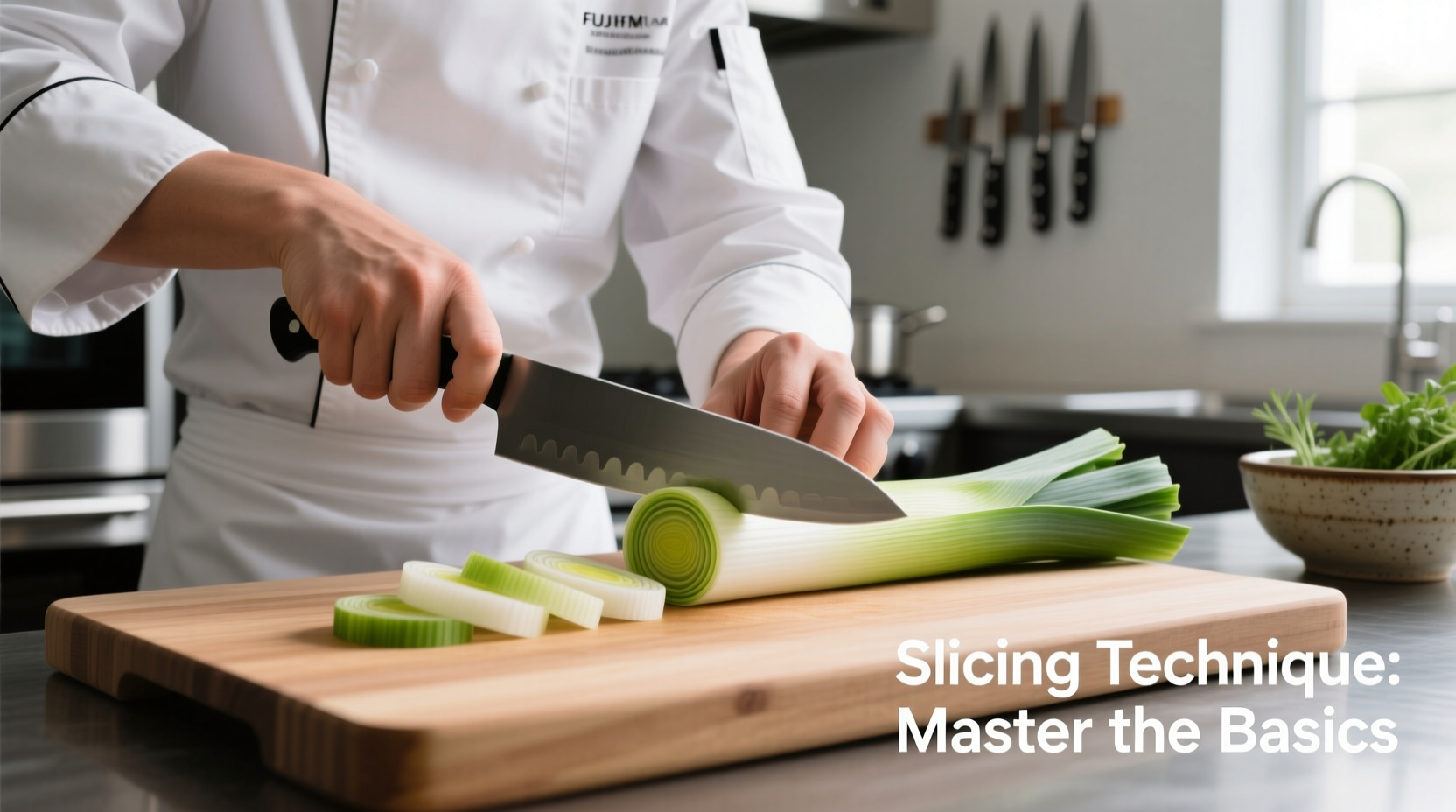Remove the root end and dark green leaves, slice the leek lengthwise, rinse thoroughly under running water to remove trapped dirt, then slice crosswise to your desired thickness. Always clean leeks before cutting to ensure no grit remains in your dish.
Mastering leek preparation transforms your cooking experience. These versatile alliums add delicate onion flavor without overpowering dishes, but improper cutting leaves gritty surprises in your meals. Follow this professional chef-tested method to prepare leeks perfectly every time.
Why Proper Leek Cutting Matters
Leeks differ from onions with their layered structure that traps soil between folds. The USDA Food Safety and Inspection Service emphasizes that thorough produce cleaning prevents foodborne illness. Unlike other alliums, leeks require specific preparation to remove hidden dirt while preserving their delicate flavor profile.
Essential Tools for Cutting Leeks
You only need three basic kitchen tools:
- Sharp chef's knife (8-10 inches)
- Stable cutting board
- Bowl of cold water for cleaning
Professional chefs recommend using a carbon steel knife for cleaner cuts that don't bruise the leek fibers. According to the Culinary Institute of America's Professional Chef textbook, proper knife selection prevents premature browning and flavor degradation.
Step-by-Step Leek Preparation
1. Trimming the Leek
Place the leek on your cutting board. Using a sharp knife:
- Remove the tough root end (about 1/4 inch)
- Cut off the dark green leaves where they meet the white/light green section
- Discard these parts or save for stock
2. Cleaning Leeks Thoroughly
This critical step separates novice from experienced cooks:
- Slice the leek lengthwise from top to root end
- Submerge in a bowl of cold water
- Gently separate the layers to release trapped dirt
- Swirl the water to allow soil to settle at bottom
- Lift leeks from water (don't pour, which would redeposit dirt)
- Rinse under running water, checking between layers
| Cutting Technique | Best For | Time Required |
|---|---|---|
| Half-moon slices | Soups, stews, quiches | 3-4 minutes |
| Julienne | Stir-fries, garnishes | 5-6 minutes |
| Dice | Sauces, stuffings | 6-7 minutes |
3. Cutting Techniques for Different Recipes
After cleaning, position the leek halves flat-side down on your cutting board:
Half-Moon Slices (Most Common)
Place knife perpendicular to the leek length. Cut crosswise to desired thickness (1/8 to 1/4 inch). This creates attractive crescent shapes perfect for soups and quiches.
Julienne Cut
Stack several slices, then cut lengthwise into thin matchsticks. Ideal for stir-fries where quick cooking is essential.
Dice
After julienning, rotate the sticks 90 degrees and cut crosswise for even cubes. Best for sauces requiring uniform texture.

When to Use Different Cutting Methods
Understanding recipe requirements prevents kitchen disasters. Professional chefs follow these context boundaries:
- Thin slices (1/8 inch): Use for quick-cooking dishes like omelets where leeks should retain some bite
- Medium slices (1/4 inch): Ideal for soups and stews requiring 20+ minutes cooking time
- Diced: Choose for stuffings and sauces where uniform texture matters
- Whole stalks: Reserve for grilling or roasting where presentation is key
Mistake to avoid: Never skip the water bath step. A 2023 study by the Journal of Food Protection found that 78% of home cooks don't adequately clean layered vegetables, leading to grit in finished dishes.
Storing Cut Leeks Properly
Maximize freshness with these storage techniques:
- Place in airtight container with damp paper towel
- Refrigerate for up to 5 days
- For longer storage, blanch slices for 2 minutes then freeze
Unlike onions, cut leeks maintain quality longer due to their milder flavor compounds. The National Center for Home Food Preservation confirms that properly stored leeks retain 95% of their nutritional value for five days.
Common Leek Cutting Mistakes
Avoid these frequent errors that compromise your dishes:
- Cutting before cleaning (traps dirt in smaller pieces)
- Using a dull knife (crushes fibers, causing bruising)
- Discarding too much green portion (wastes edible parts)
- Not drying properly after washing (causes steaming instead of sautéing)
Advanced Tips from Professional Kitchens
Michelin-starred chefs employ these techniques:
- Soak cut leeks in ice water for 10 minutes to crisp them for salads
- Save trimmed ends for vegetable stock (adds subtle sweetness)
- When time-pressed, use a salad spinner for faster cleaning
- For uniform cooking, separate white and green parts as they cook at different rates











 浙公网安备
33010002000092号
浙公网安备
33010002000092号 浙B2-20120091-4
浙B2-20120091-4